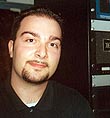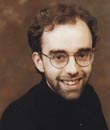|
|
 
|
|
Author
|
Topic: DFP3000 levels
|
Antonio Marcheselli
Phenomenal Film Handler

Posts: 1260
From: Florence, Italy
Registered: Mar 2000
|
 posted 06-15-2004 04:26 PM
posted 06-15-2004 04:26 PM





Hi everyone.
I have a question. I see too many times our SDDS 3000 player goes to "OVER" on the main display. I realize that the channel meters are monitoring the outputs since if I mute the master volume the meters go to zero. So I wonder how I can I prevent the clipping.
I thought that during equalization I should compensate the equalization with channel level.
Example: I trim Left Channel 1000Hz level to +2dB and I lower the main Left Channel level to -2dB. With subwoofer is simpler since there is only two parametric eq: if I set one eq to +2dB and I set the main channel level to -2dB I should have no problem, isnt' it?
The EQ was made this way, but just today I saw "Torque" in extreme clipping mainly on SW channel for MANY SECONDS... At the reference level, of course, no more.
Should I left few headroom like, for example, set eq for +2dB at 60Hz and lower the main channel to -4dB?
This question call to my mind another one: if in DFp3000 the zero level is "0dB", what is the "zero" level on the CP650?
What is the level that, if I apply no equalization, prevent the sound to clip at outputs?
Thanks for your replies!
Bye
A
| IP: Logged
|
|
Michael Schaffer
"Where is the
Boardwalk Hotel?"

Posts: 4143
From: Boston, MA
Registered: Apr 2002
|
 posted 06-17-2004 03:40 PM
posted 06-17-2004 03:40 PM





The channel levels are pre-fader, so the fader setting will not influence them (muting is different, as it cuts the channels pre-fader too).
If an individual bands is raised by 2dB, it is not necessary to lower the channel level by 2dB. The channel level is the sum of all individual bands which are usually around 70dB, boosting one of them will not have the same effect on overall channel level as on the individual band. As a general rule, it is better to cut than to boost and to make sure neighbor bands are not further than 3dB apart, and not to overdo the equalizing as the bands will never be perfectly flat on the RTA. It is an approximation only anyway. If you cut more bands than you boost and use the amplifier gain control to achieve an overall level of 85dB SPL in the room, then you shouldn`t run into the digital clipping as often. If it still is there, it is best to lower the digital channel level a bit and compensate on the amplifier. The DFP outputs are rather quiet, so you won`t add any perceptible noise by lowering the channel levels a bit.
SDDS 0dB = Dolby +20dB.
| IP: Logged
|
|
|
|
|
|
|
|
|
|
|
|
|
|
|
|
|
|
|
|
|
|
All times are Central (GMT -6:00)
|
|
Powered by Infopop Corporation
UBB.classicTM
6.3.1.2
The Film-Tech Forums are designed for various members related to the cinema industry to express their opinions, viewpoints and testimonials on various products, services and events based upon speculation, personal knowledge and factual information through use, therefore all views represented here allow no liability upon the publishers of this web site and the owners of said views assume no liability for any ill will resulting from these postings. The posts made here are for educational as well as entertainment purposes and as such anyone viewing this portion of the website must accept these views as statements of the author of that opinion
and agrees to release the authors from any and all liability.
|

 Home
Home
 Products
Products
 Store
Store
 Forum
Forum
 Warehouse
Warehouse
 Contact Us
Contact Us




 Printer-friendly view of this topic
Printer-friendly view of this topic







![[Smile]](smile.gif)







